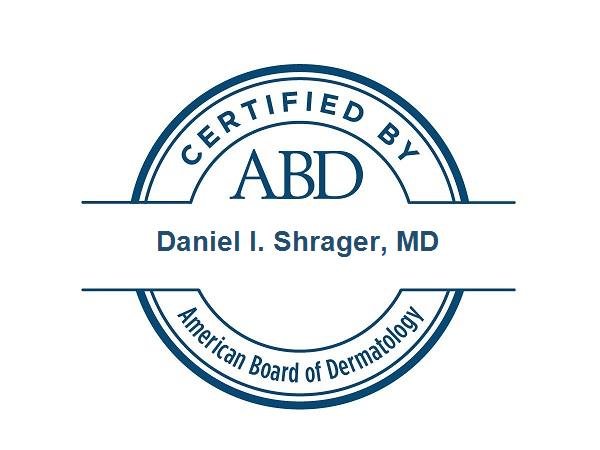Electronic Brachytherapy: A Precision Revolution in Skin Cancer Treatment
In the rapidly advancing landscape of oncology, electronic brachytherapy (eBx) and superficial radiation therapy (SRT) have emerged as transformative tools for treating non-melanoma skin cancers, such as basal cell carcinoma and squamous cell carcinoma. These cutting-edge technologies harness low-energy X-rays to deliver highly targeted radiation directly to cancerous lesions, offering a potent combination of efficacy, safety, and patient comfort. By redefining the delivery of radiation therapy, eBx and SRT represent a significant leap forward in precision medicine, minimizing collateral damage to healthy tissue while achieving cure rates comparable to or exceeding traditional methods. Leading this revolution is Alpha Dermatology of Pennsylvania, under the visionary direction of Daniel I. Shrager, M.D., a Phi Beta Kappa graduate of the College of Arts and Sciences at Cornell University and the University of Pennsylvania School of Medicine. Dr. Shrager has spearheaded the practice’s campaign to pioneer electronic brachytherapy and SRT, utilizing the three leading technologies from Sensus, ELEKTA, and Xstrahl to successfully treat thousands of skin cancers in their New Hope and Sellersville offices over more than a decade.
At the heart of eBx and SRT’s innovation is their ability to focus radiation with unprecedented accuracy. Unlike conventional external beam radiation therapy, which projects high-energy beams through healthy tissue to reach a tumor, these technologies employ compact, portable devices that emit low-energy X-rays via surface applicators. These applicators, positioned directly on the skin, deliver a tightly controlled dose that penetrates only a few millimeters, targeting the tumor while sparing surrounding healthy structures.
The design of these systems is as elegant as it is effective. The Sensus, ELEKTA, and Xstrahl systems used by Alpha Dermatology generate X-rays electronically, eliminating the need for radioactive isotopes used in traditional brachytherapy. This not only enhances safety but also simplifies logistics: the low-energy radiation requires minimal shielding, allowing treatments to be administered in outpatient settings, such as dermatology clinics, rather than specialized radiation facilities. Treatment sessions are brief, typically lasting a few minutes, and the procedure is entirely non-invasive. Patients experience no pain, no need for anesthesia, and no recovery time, making eBx and SRT a stark departure from the invasive or prolonged protocols of surgery or conventional radiation. Under Dr. Shrager’s leadership, Alpha Dermatology has leveraged the unique strengths of Sensus, ELEKTA, and Xstrahl technologies to treat thousands of patients across their New Hope and Sellersville offices, establishing these modalities as a cornerstone of their skin cancer care.
Clinical data underscores the promise of eBx and SRT. Studies report local control rates of 95-98% for non-melanoma skin cancers, aligning with or surpassing outcomes from surgical excision or traditional radiation. A 2023 meta-analysis in The Journal of Dermatologic Oncology found that eBx and SRT achieved equivalent oncologic outcomes to Mohs surgery for early-stage basal cell carcinoma, with the added benefit of reduced cosmetic impact. Side effects are minimal, typically limited to transient erythema or mild irritation at the treatment site, and resolve quickly. The low-energy X-rays, with their shallow penetration, pose negligible risk to deeper tissues or organs, enhancing the therapies’ safety profile. Alpha Dermatology’s extensive experience, with thousands of successful treatments over more than a decade using Sensus, ELEKTA, and Xstrahl systems under Dr. Shrager’s guidance, reinforces these findings, demonstrating the reliability and effectiveness of these technologies in real-world practice.
The patient experience is another area where eBx and SRT shine. Non-melanoma skin cancers often appear on cosmetically sensitive areas, such as the face, where scarring or disfigurement from surgery can affect quality of life. The targeted approach of these technologies preserves skin integrity, often leaving no visible trace of treatment. The outpatient nature of the treatment further reduces the psychological and logistical burden, allowing patients to resume normal activities immediately after sessions. At Alpha Dermatology’s New Hope and Sellersville offices, this patient-centered approach, championed by Dr. Shrager and enabled by the advanced capabilities of Sensus, ELEKTA, and Xstrahl systems, has been a hallmark of their pioneering work, earning them a reputation for compassionate and effective care.
The technological underpinnings of eBx and SRT highlight their forward-thinking design. The electronic X-ray sources in Sensus, ELEKTA, and Xstrahl systems are calibrated to deliver radiation in a highly conformal manner, guided by imaging and dosimetry software that ensures millimeter-level precision. Advances in applicator design allow for customization to match the size and shape of each lesion, optimizing dose distribution. Moreover, the absence of radioactive materials eliminates the regulatory and safety concerns associated with isotope-based therapies, making eBx and SRT more accessible to community-based clinics like those operated by Alpha Dermatology of Pennsylvania.
Electronic brachytherapy and superficial radiation therapy stand as testaments to the power of precision in modern medicine. By combining technological sophistication with a patient-centered approach, they offer a glimpse into the future of cancer care—one where treatments are as targeted as they are humane, and where healing leaves no unnecessary scars. Through their pioneering efforts in New Hope and Sellersville, led by Dr. Daniel I. Shrager, a distinguished graduate of Cornell University and the University of Pennsylvania School of Medicine, and utilizing the leading technologies from Sensus, ELEKTA, and Xstrahl, Alpha Dermatology of Pennsylvania has not only embraced this future but helped shape it, delivering hope and healing to thousands of patients over more than a decade.












